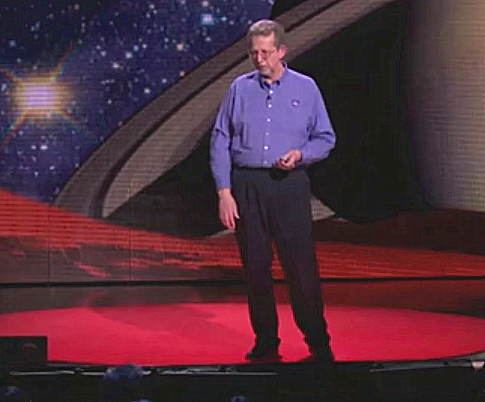Another moon, very similar, is Europa.
另一個非常相似的衛星,木衛二。
Galileo visited Jupiter's system in 1996 and made fabulous observations of Europa.
伽利略號在1996年時探訪了木星系統,對木衛二進行了詳細的觀察。
Europa, we also know, has an under-the-ice crust ocean.
我們知道木衛二擁有存在于冰層下的海洋。
Galileo mission told us that, but we never saw any plumes.
伽利略號告訴了我們這些,但我們從未看到過任何的片狀水。
But we didn't look for them.
因為我們從未找尋過它們。
Hubble, just a couple years ago, observing Europa,
哈勃望遠鏡,就在幾年前觀察木衛二時,
saw plumes of water spraying from the cracks in the southern hemisphere, just exactly like Enceladus.
看到了片狀水,它們從南半球的裂縫中噴灑出來,就跟土衛二一模一樣。

These moons, which are not in what we call a traditional habitable zone,
這些衛星不在我們稱作傳統宜居地的區域,
that are out in the solar system, have liquid water.
而在太陽系更遠的地方卻擁有著液態水。
And if there are organics there, there may be life.
如果那里有有機物的話,那里就可能有生命。
This is a fabulous set of discoveries
這是一系列絕佳的發現,
because these moons have been in this environment like that for billions of years.
因為這些衛星已經在這樣的環境中存在了數十億年。
Life started here on Earth, we believe, after about the first 500 million, and look where we are.
我們相信地球上的生命開始于地球形成5億年之后,看看現在的我們(進化的程度)。
These moons are fabulous moons.
這些衛星讓人難以置信。











